 Iran’s Attack on Israel
Iran’s Attack on Israel


15 min read
A comprehensive overview of the Jewish presence in the Land of Israel, from the 16th to the 18th centuries.
The Ottoman Empire conquered the Land of Israel from the Mamluks in 1517. At that time, the Jewish population consisted of 5,000 people, which constituted 1.7% of the total population1.
Some Jewish communities remained unaffected by the conquest while others suffered from violence and looting. In the long run, the Ottoman conquest proved to be beneficial for the Jews in the Land of Israel. As the Ottoman Empire expanded, Sephardic Jews that had found refuge there after the expulsion were free to move within its borders. Some used this opportunity to make their way to the Land of Israel and settle there.
In 1540, a group of Spanish Jews arrived in Hebron and enhanced its then tiny Jewish community. Historian Jerold S. Auerbach writes2:
[A] group of Jewish exiles from Spain, joined by Menachem ben Moshe Bavli, a respected author from Baghdad, acquired a tract of land in Hebron from the local Karaite community… Rabbi Malchiel Ashkenazi, their benefactor, purchased a courtyard that became known as El Cortiyo, “the Court of the Jews.” He also subsidized the purchase of additional buildings around the newly built synagogue, where he became the first rabbi of Hebron’s restored community. Referred to as an “accomplished scholar, pietist, and saint,” he encouraged the migration of scholars of Kabbalistic mysticism from Safed, where he had studied before arriving in Hebron.
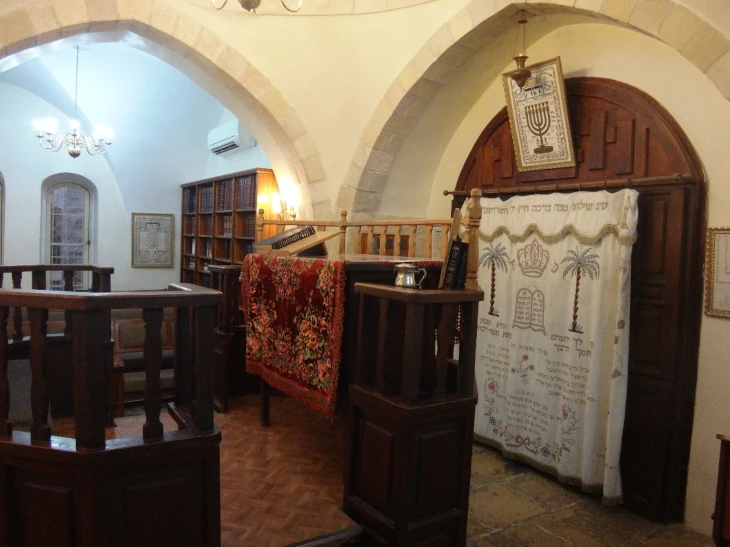 The interior of the centuries-old Avraham Avinu Synagogue in Hebron. Source: via Wikimedia Commons
The interior of the centuries-old Avraham Avinu Synagogue in Hebron. Source: via Wikimedia Commons
Safed also experienced an influx of new arrivals. Among them was Rabbi Yosef Karo, the author of the classic Code of Jewish Law. In Safed, he was appointed a member of the rabbinical court and founded a Talmudic academy, which drew many students.
It was around the same time that Safed became known as the city of kabbalists. Some of the prominent kabbalists that moved to Safed in the 16th century were Rabbi Shlomo Alkabetz, Rabbi Moshe Alshich, and most famous of them all, Rabbi Yitzchak Luria, known as the Arizal.
Though born in Jerusalem, the Arizal grew up in his uncle’s home in Egypt, where he moved with his mother after his father’s untimely passing. From a young age, he was recognized as a promising scholar. He studied with Egypt’s greatest rabbis. As a teenager, the Arizal began studying kabbalah, eventually developing and popularizing his own approach to kabbalistic teachings.
Rabbi Berel Wein writes3,
Rabbi Yitzchak arrived in Safed in 1570 to study with the leading Kabbalist of the age, Rabbi Moshe Cordovero. However, Rabbi Moshe died that same year, and Rabbi Yitzchak immediately inherited his mantle of Kabbalist leadership in the Jewish world… Rabbi Yitzchak made a radical departure from the past traditions of teaching Kabbalah… [He] introduced a new theory and form of Kabbalah that swept the Jewish world and which become the normative form of Kabbalah for the next four centuries.
Unfortunately, the Arizal’s life was cut short less than three years after his arrival in Safed. But his impact lived on. His students perpetuated his legacy, spreading his teachings in Safed and beyond.
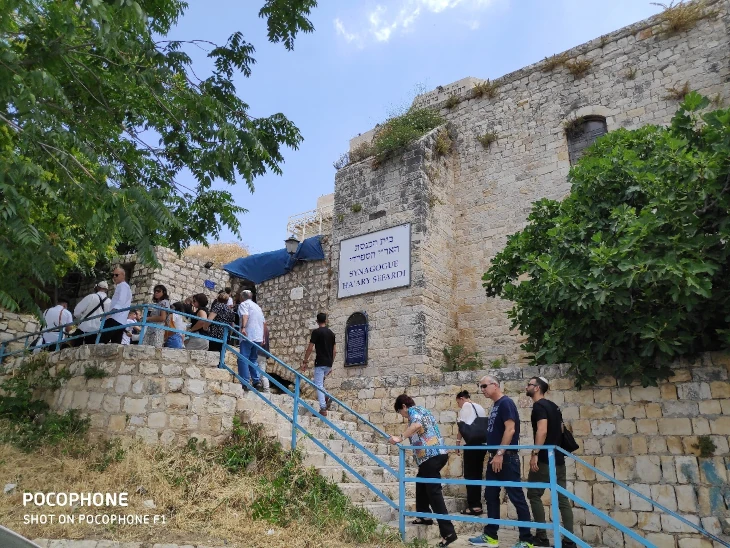 The Sephardic Ari Synagogue in Safed, where the Arizal is said to have prayed. Source: Wikimedia Commons
The Sephardic Ari Synagogue in Safed, where the Arizal is said to have prayed. Source: Wikimedia Commons
In addition to its spiritual development, the Galilee also underwent much physical development in the 16th century thanks to the efforts of two famous philanthropists, Dona Gracia Mendez Nasi and her nephew and son-in-law, Don Joseph Nasi.
The wealthy and influential Nasi family escaped from Portugal, where they had been forcibly converted to Christianity, and openly returned to Judaism, eventually settling in Constantinople, the capital of the Ottoman Empire. They gained the favor of Sultan Suleiman the Magnificent and used their connections to help their fellow Jews, especially those persecuted by the Inquisition. Among their accomplishments was rebuilding of the city of Tiberias, on the shores of the Sea of Galilee.
Historian Cecil Roth writes4:
In 1561… Don Joseph procured from the sultan a grant of Tiberias and seven villages in the neighborhood, apparently as a semi-feudal dependency – “making him the prince and ruler over them,” in the words of a contemporary Jewish chronicle… The area in question was apparently set aside for Jews, who were ultimately to predominate in it; but this development was still in the future. The exacts terms of the grant are unfortunately not preserved…
Presumably, the Nasis paid the sultan a large amount upfront and committed to a significant yearly tribute.
Unable to travel to the Land of Israel himself due to his business and political obligations, Don Joseph sent his agent, Joseph ben Ardut. Roth continues5,
Before leaving for Palestine, probably in the summer of 1563, the latter had an audience with the sultan, who received him favorably and made him [a daily] allowance… He thus enjoyed the authority of an imperial officer, as well as that of Don Joseph’s personal representative; and he bore with him both a copy of the imperial firman and letters patent to the governor of Safed and his superior at Damascus, ordering them to give him all possible assistance. Some stalwarts who were to be the pioneers of the new settlement accompanied him…
The newcomers rebuilt the walls of Tiberias, restored deserted houses, and cleared the ruins. They reopened an ancient synagogue.
Dona Gracia herself made plans to move to Tiberias and ordered the construction of a grand mansion for herself outside the city walls. It is not clear from historical sources whether she actually managed to make the move.
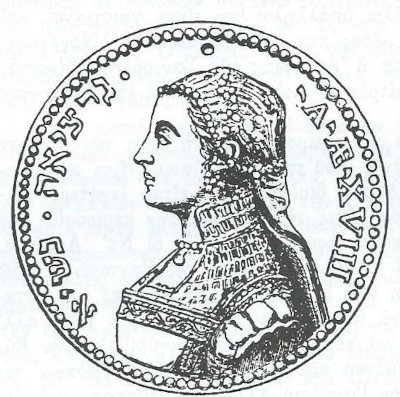 Medallion belonging to the Nasi family. Source: Public domain, via Wikimedia Commons
Medallion belonging to the Nasi family. Source: Public domain, via Wikimedia Commons
Concerned with the newly restored city’s financial security, Don Joseph established a textile industry in Tiberias, importing wool from Spain and facilitating the planting of mulberry trees for silk production. He also encouraged agriculture.
Roth writes6:
A traveler who visited Tiberias in 1564 gives a picture of a scene which is very different from the desolation described by the pious pilgrims of half a century before. The city of Tiberias, he writes, was visible from afar; it lay so near the Sea of Galilee that part of it looked like it was actually sunk in the water; it was strong, being surrounded by solid walls. There was great abundance of date-palms, orange trees and pine trees. The natural luxuriance was so great that the scent of the plants was almost suffocating.
Jewish scholarship also grew in Tiberias. Several scholars from Safed relocated to Tiberias, with the full support of Dona Gracia.
What happened in Tiberias in the ensuing decades is not clear. Don Joseph attempted to bring more Jews to his flourishing new community, but some groups of Jews en route to Tiberias perished at sea or were captured by pirates and sold into slavery. It is unknown how many of those Jews who accepted Don Joseph’s invitation actually made it to Tiberias.
In the Land of Israel itself, the newcomers faced hostility and violence from the surrounding Arab and Bedouin population. Some fled to safer destinations. After Don Joseph’s death, the Tiberias Jewish community slowly deteriorated.
But the Nasi family’s efforts were not in vain. Over a century later, the community and its vibrant agriculture were rebuilt by Rabbi Chaim Abulafia and his followers, who arrived in Tiberias from Smyrna, Turkey in 17407. Rabbi Abulafia also opened a Talmudic academy in Tiberias.
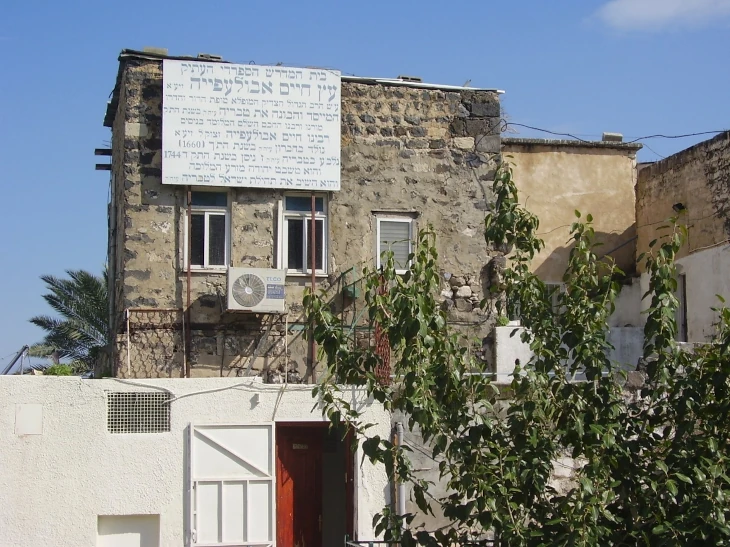 Abulafia Synagogue in Tiberias, established in 1742 by Rabbi Chaim Abulafia. via Wikimedia Commons
Abulafia Synagogue in Tiberias, established in 1742 by Rabbi Chaim Abulafia. via Wikimedia Commons
In the 17th century, the Jewish communities in the Land of Israel experienced several upheavals, such as violent attacks, epidemics, and famine. And yet, there were notable personalities who left the lands of their birth and made their way to the Land of Israel.
Rabbi Yeshaya Horowitz, known as the Shelah, came to Jerusalem from Prague in 1621, at the age of 61. Already world-famous for his scholarship, he was immediately appointed rabbi of Jerusalem’s Ashkenazic community. For several years, he taught and wrote his influential works in peace.
In 1625, the cruel local governor imprisoned Rabbi Horowitz and other rabbis and held them for ransom. Once ransomed, Rabbi Horowitz fled to Safed and later to Tiberias, where he died in 1630.
Another influential arrival to the Land of Israel was Rabbi Yaakov Tzemach, originally from Portugal. Raised in a converso family, he escaped to Safed, where he threw himself into Jewish learning, eventually becoming a scholar and teacher of Torah. In 1642, he came to Jerusalem and opened a Talmudic academy there.
After Rabbi Tzemach’s passing, his work in education was continued by Rabbi Yaakov Chagiz, who came to Jerusalem in 1658 from Italy. He expanded the academy and updated its curriculum, with the aim of providing each student with a solid foundation in Torah study.
While the rate of Jewish immigration to the Land of Israel in the 17th century slowed down, it picked up pace again in the 18th century. Professor Jacob Barnai writes8:
[T]here was a constant movement of immigrants from the 1730s until the end of the century… The Istanbul Officials not only enabled the immigration of thousands of Jews to Palestine, but also organized it. Every year they made an exact listing of the immigrants and the potential immigrants from other countries, and every summer they hired a ship, sometimes several ships, for the immigrants and the pilgrims… The boats that sailed from Istanbul generally contained about 100-200 people. But boats did not sail only from Istanbul. We know that toward the end of the summer boats set out from Izmir, Salonika, Leghorn (Livorno), and even Amsterdam. It seems likely that hundreds of Jews went to Palestine every year, some of them in order to settle there and others for a pilgrimage.
The newcomers strengthened the existing communities, both financially and spiritually. Barnai continues9:
Among the immigrants were well known rabbis and rich Jews, who donated much money to Palestine and entrusted considerable sums to the Istanbul Fund… The increased immigration of Torah scholars led to the building of yeshivas [Talmudic academies] in various places, especially in Jerusalem, in which several hundred Torah scholars were concentrated.
While some immigrants came on their own, many followed passionate leaders who inspired their followers to fulfill their lifelong dream of settling in the Land of Israel.
One such leader was Rabbi Yehuda Hechassid from Poland, who gathered 1,500 followers – the largest Ashkenazi group in those days to set out for the Land of Israel. Unfortunately, 500 of them died during the difficult and lengthy journey10.
Rabbi Rabinowitz writes11:
What gave the survivors the strength to continue on and keep from panicking? The answer is Rabbi Yehudah HaChassid, who preached wherever they went with extraordinary enthusiasm and inspired all with his fiery words. In his sermons, he aroused his hearers to repentance and virtuous behavior.
When the group arrived in Jerusalem in 1700, they almost doubled the Jewish population of the city. Immediately, they began to build homes and a synagogue.
Then tragedy struck. Rabbi Yehuda Hachassid died five days after their arrival. Left leaderless, the new arrivals did not know what to do next. Some went back. Others moved to other cities in the Land of Israel.
Those who stayed continued building but too soon ran out of funds. In desperation, they borrowed money from the local Arab landowners. As time passed, their debts only grew, and their creditors grew impatient.
In 1720, their patience ran out. The local Arabs attacked the emerging Ashkenazic community and destroyed their homes and synagogue. Some community members were arrested, and others fled elsewhere. For the next century, no Ashkenazi Jews were permitted to settle in Jerusalem.
The destroyed synagogue became known as the Churva – ruin. It was later rebuilt, then destroyed, then rebuilt again, but it is still known as the Churva synagogue12.
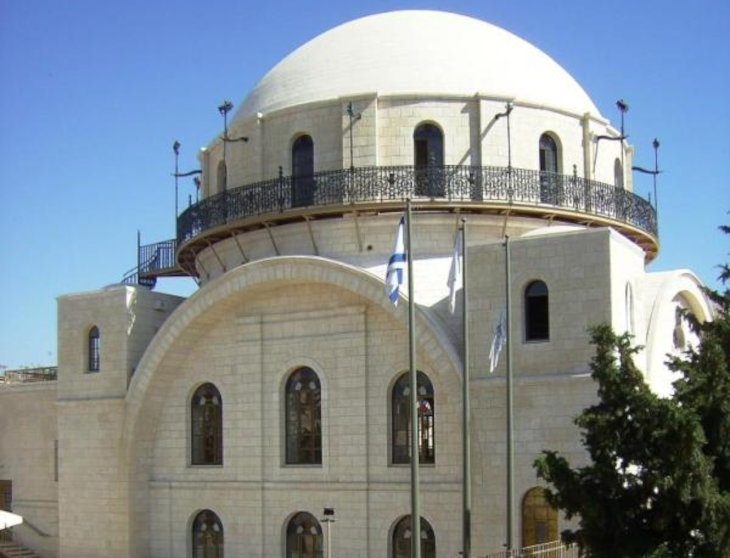 The rebuilt Churva synagogue today, in the Old City of Jerusalem. Wikimedia Commons
The rebuilt Churva synagogue today, in the Old City of Jerusalem. Wikimedia Commons
Another leader who came to the Land of Israel with a group of students was Rabbi Chaim ibn Attar, also known as the Ohr Hachaim, originally from Morocco. On his arrival to Jerusalem in 1742, he founded a synagogue and a Talmudic academy. Their original buildings are located in the Old City of Jerusalem, on a street named Ohr Hachaim after the rabbi.
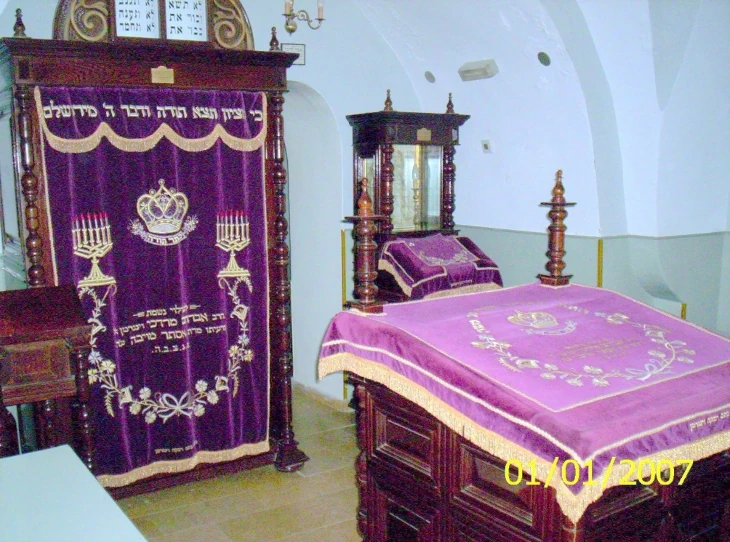 The interior of the Ohr Hachaim Synagogue in the Old City of Jerusalem. Source: Public domain, via Wikimedia Commons
The interior of the Ohr Hachaim Synagogue in the Old City of Jerusalem. Source: Public domain, via Wikimedia Commons
Another prominent personality that arrived in the Land of Israel in mid-18th century was Rabbi Gershon of Kitov, the brother-in-law of the famous Baal Shem Tov, founder of Chassidism. Though he brought along only his own family, his move had larger repercussions.
Rabbi Rabinowitz writes13:
They… lived a life so arduous, that Rabbi Gershon was moved to state in a letter he wrote, “I derive no pleasure whatsoever from my life in This World.” It can be assumed that Rabbi Gershon’s material demands were frugal, but he nevertheless suffered from privation. He didn’t even have an Ashkenazi study partner, and he formed ties with the Sephardi community. However, he served as a beacon to others, a sort of bonfire similar to that which was ignited to announce the new moon in former times; his very presence in the land proclaimed to others that there was an obligation to make aliyah14 to the Land of Israel. In that sense, it can be said that his aliyah was equivalent to the aliyah of tens of thousands. And if he himself derived no pleasure from life in this world, he at least laid down the foundation for the pleasure of many others in the Holy Land, even in the material sense.
Indeed, hassidim – followers of the Baal Shem Tov – followed Rabbi Gershon’s example, in a trickle that turned to a wave.
The first group of hassidim settled in Tiberias in mid-18th century. It included Rabbi Nachman of Horodenka and Rabbi Menachem Mendel of Premishlan.
A larger group, led by Rabbi Menachem Mendel of Vitebsk, set out in 1777. Rabbi Menachem Mendel, a respected spiritual leader of hassidim in Russia, brought along 300 students. The journey was not easy. Unfortunately, one of their boats sunk on the way, and thirty of the travelers drowned.
The survivors reached Safed. There, they experienced antagonism from the local government and financial difficulties. Rabbi Menachem Mendel and many of his students decided to move to Tiberias. Some hassidim, led by Rabbi Avraham of Kalisk, chose to stay in Safed.
In Tiberias, Rabbi Menachem Mendel’s group built a synagogue, which remained in use until a major earthquake in 1837. It was later rebuilt by a group of Karlin-Stolin hassidim in 1870.
Rabbi Menachem Mendel was respected not only by his followers but also by the original Sephardic community. He highly valued Jewish unity and maintained warm relationships with the Sephardim. His own son married a Sephardic woman.
Despite the hardships he experienced in the Land of Israel, Rabbi Menachem Mendel expressed his love for the land and encouraged others to settle there. Rabbi Eliezer Melamed writes15,
Who knows just how great the impact of Reb Menachem Mendel’s move to the Holy Land was on the greater Chassidic community, especially the Jews of Russia. The personal example of the greatest Chassidic sage in that generation giving up a comfortable life and, with great self-sacrifice, moving to Israel was more effective than thousands of sermons. Slowly, little by little, the Chassidic community in the Holy Land began to sprout and grow. It was this community which was to serve as the foundation upon which Chassidism would be rebuilt after the terrible Holocaust destroyed European Chassidism.
In fact, it may very well have been Reb Menachem Mendel’s move to the land of Israel that sowed the vision of settling and nurturing the land of Israel deep in the hearts of Russian Jewry - a vision that would lead to the appearance of a movement for practical Zionism led by Russian Jewry many years later.
 The grave of Rabbi Menachem Mendel of Vitebsk in Tiberias. Source: James Emery from Douglasville, United States, via Wikimedia Commons
The grave of Rabbi Menachem Mendel of Vitebsk in Tiberias. Source: James Emery from Douglasville, United States, via Wikimedia Commons
Despite a constant influx of new immigrants, the overall Jewish population of the Land of Israel did not increase by the end of the 18th century. Several disasters struck the communities: an earthquake in Safed, plagues in Jerusalem and Acre, a blood libel in Hebron, droughts, and other misfortunes. Many people perished, and others left the Land of Israel16.
Click here to read the previous article in this series.
Part 3 of this series will discuss Jewish life in the Land of Israel from the 19th century to present day.

wonderful article!!
This is wonderful!